Pin Oak Tree
- October 4, 2023
- 0 comment
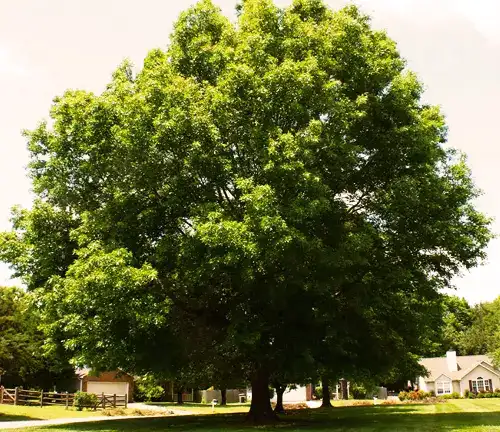
The Pin Oak tree, scientifically known as Quercus palustris, is a magnificent deciduous tree native to North America, primarily found in the eastern United States. It derives its name from the characteristic shape of its leaves, which often resemble the shape of a pin or a spearhead. Pin Oaks are known for their impressive height, reaching up to 70-100 feet, with a spread of 25-40 feet, making them a prominent and stately addition to landscapes and urban areas.
One of the most distinguishing features of the Pin Oak is its deeply lobed, glossy green leaves that turn brilliant shades of red and russet in the fall, creating a stunning autumn display. The tree also bears acorns, which serve as a vital food source for wildlife like squirrels and deer. Pin Oaks are notable for their adaptability to various soil types, even tolerating periodic flooding, which has earned them the name “swamp oak.” They have a robust root system, which makes them suitable for planting along streets and in urban environments.
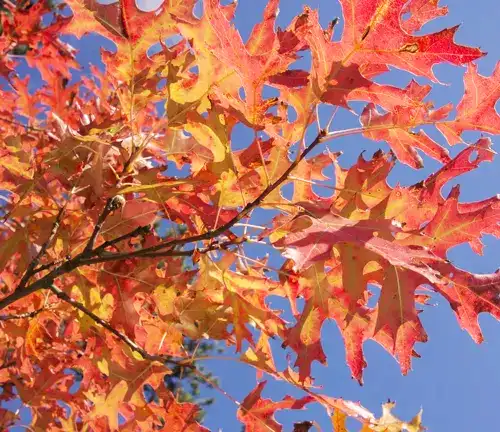
In addition to its aesthetic appeal, Pin Oak provides valuable ecosystem services, such as carbon sequestration and oxygen production, while also contributing to soil stabilization. Their elegant appearance, hardiness, and environmental benefits have made Pin Oaks a popular choice among landscapers and nature enthusiasts, enhancing the beauty of parks, streets, and gardens across their native range.
| Characteristic | Description |
| Scientific Name | Quercus palustris |
| Family | Fagaceae |
| Type | Deciduous |
| Height | 70-100 feet |
| Spread | 25-40 feet |
| Native Range | Eastern United States |
| Growth Rate | Moderate to fast |
| Lifespan | 90-120 years |
| Sun Exposure | Full sun |
| Soil Type | Well-drained, adaptable, and tolerant of wet conditions |
A Brief History
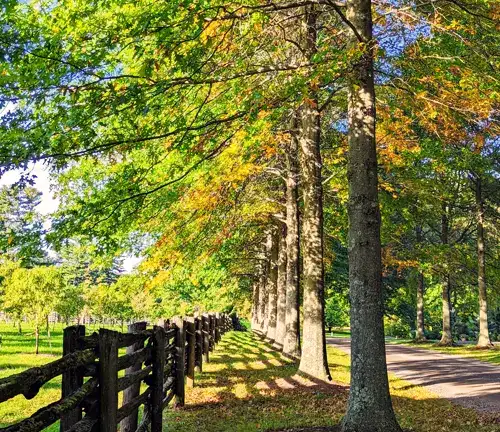
The Pin Oak, Quercus palustris, has a captivating history deeply rooted in the landscapes of the eastern United States. With a lineage dating back centuries, these majestic trees have silently witnessed the evolution of their surroundings. Once native to vast woodlands, Pin Oaks have adapted seamlessly to urban settings, becoming an integral part of cityscapes. Their journey reflects not only the resilience of the species but also its ability to thrive amidst changing environments, earning them a special place in the historical narrative of the region.
Color/Appearance
The Pin Oak’s seasonal wardrobe is a spectacle that draws admirers from far and wide. Throughout spring and summer, the glossy green leaves form a lush canopy, providing shade and enhancing the aesthetics of parks and streets. However, it is in the fall that the Pin Oak truly steals the spotlight. The transformation of its foliage into a vibrant palette of reds and russets is a breathtaking symphony of colors. Each tree becomes a living canvas, painting the landscape with an ephemeral masterpiece that marks the changing seasons.
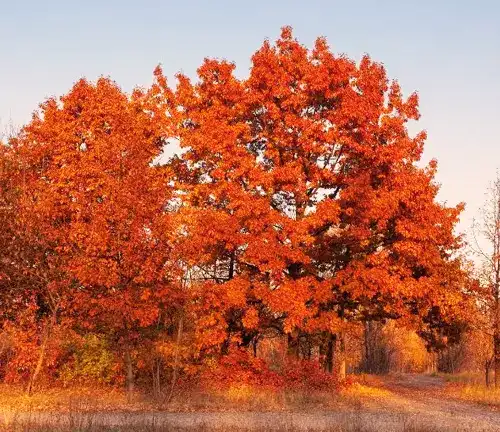
Botanical Features
Delving into the botanical features of the Pin Oak unveils a world of intricate details. The deeply lobed leaves, reminiscent of pins or spearheads, create a distinctive silhouette. The pyramidal shape of the tree, coupled with smooth gray bark that matures into textured ridges, adds to its visual allure. Beneath the surface, a robust root system not only anchors the tree but also enables its adaptability to various soil conditions, including swampy terrains.
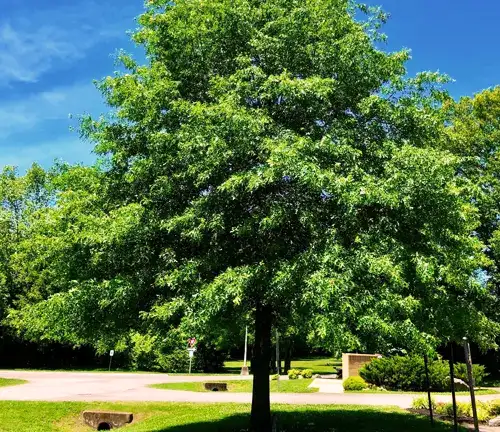
Cultivation and Care
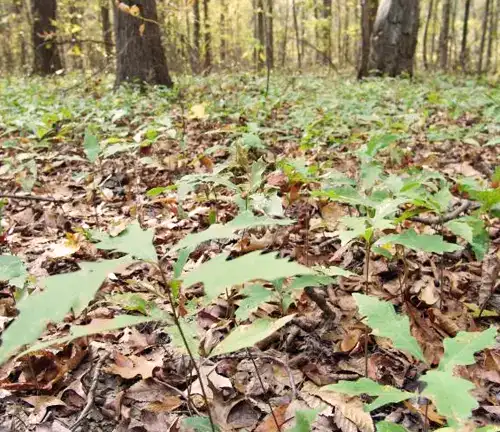
Cultivating and caring for Pin Oaks involves understanding their preferences and adapting to their unique characteristics. These trees, while accommodating various soil types, thrive in well-drained conditions and under full sun exposure. The moderate to fast growth rate demands attention to pruning and shaping. Careful cultivation practices ensure the longevity and health of these magnificent trees, whether in urban parks or suburban landscapes.
Ecological Importance
Ecologically, the Pin Oak emerges as a key player in the intricate web of life. Its acorns, produced in abundance, sustain a variety of wildlife, from industrious squirrels to graceful deer and an array of birds. Beyond being a source of sustenance, Pin Oaks actively contributes to environmental health. They sequester carbon, play a role in mitigating climate change, and release oxygen, enriching the air we breathe. Recognizing the ecological importance of Pin Oaks underscores their significance in maintaining the balance of local ecosystems.

Wood Products and Applications
While not as commercially prominent as some oak varieties, Pin Oak wood has its own set of unique qualities. The timber, with its moderate density and appealing grain, finds applications in construction, furniture crafting, and flooring. Although not a primary choice for these purposes, Pin Oak wood holds its own charm and utility, adding versatility to the array of oak species utilized in various industries.


Culinary Applications
Intriguingly, the acorns produced by Pin Oaks harbor culinary potential. Historically, indigenous communities processed these nuts into flour, showcasing resourcefulness and sustainability. While not as widely embraced in modern culinary practices, exploring the possibilities of incorporating Pin Oak acorns into contemporary cuisine could resurrect age-old traditions and add a novel, earthy flavor to the culinary landscape.

Benefits
The benefits of Pin Oak extend beyond the visual and ecological realms. Its adaptability to urban environments positions it as a valuable asset in city planning, contributing to green spaces and enhancing the aesthetic appeal of streets and parks. The Pin Oak’s role in oxygen production and carbon sequestration aligns with broader environmental goals, emphasizing the tree’s contribution to a healthier, more sustainable planet. As a symbol of resilience and natural beauty, the Pin Oak enriches the quality of life for both human and non-human inhabitants of its diverse habitats.
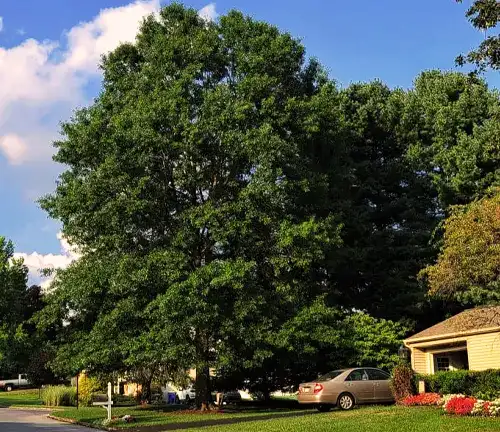
In essence, the Pin Oak, with its intricate history, captivating colors, unique botanical features, and multifaceted benefits, serves as a living testament to the interconnectedness of nature and human existence. Understanding and celebrating the nuances of the Pin Oak’s story deepens our appreciation for this remarkable species and the vital role it plays in shaping the landscapes we call home.
Frequently Asked Questions
- Are Pin Oaks Prone to Specific Pests or Diseases?
Pin Oaks are generally hardy, but they can be susceptible to certain pests and diseases. Oak wilt is a significant concern, affecting the vascular system and potentially leading to the death of the tree. It’s essential to monitor for early signs of diseases and implement preventive measures to maintain the tree’s health. - How Do Pin Oaks Adapt to Urban Environments?
Pin Oaks showcases remarkable adaptability to urban settings. Their tolerance for various soil types, including compacted urban soils, makes them a popular choice for city planting. Understanding how these trees cope with pollution, limited soil space, and other urban challenges sheds light on their resilience in city landscapes. - Do Pin Oaks Always Produce Acorns?
While Pin Oaks are prolific acorn producers, the quantity can vary from year to year. Some years may see an abundance of acorns, while others may have fewer. This natural variability is influenced by factors like weather conditions, which can impact pollination and subsequent acorn development. - Can You Use Pin Oak Wood for DIY Projects?
While Pin Oak wood is not as commonly used as some other oak species, it possesses unique qualities that make it suitable for certain DIY projects. Its moderate density and attractive grain make it a viable choice for crafting furniture, smaller woodworking projects, and even decorative items. Understanding the characteristics of Pin Oak wood can guide hobbyists and DIY enthusiasts in selecting the right material for their projects. - How Can I Encourage Vibrant Fall Colors in My Pin Oak?
The vibrant fall colors of Pin Oaks are one of their most appealing features. To enhance and maintain these colors, consider factors such as providing adequate sunlight, proper watering, and avoiding stressors like compacted soil. Additionally, ensuring the tree is healthy and free from diseases will contribute to a more spectacular autumn display.



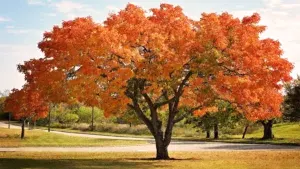

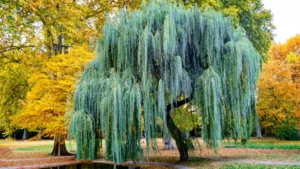
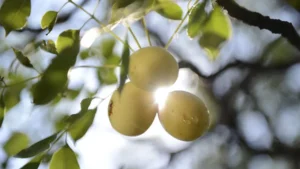
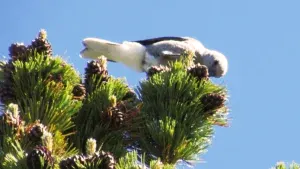


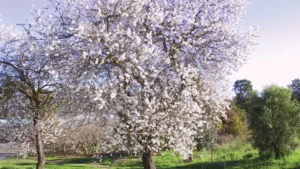

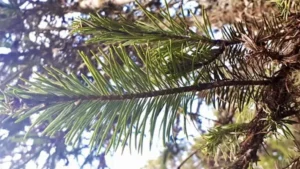
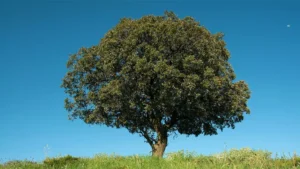
Leave your comment